Opinion & Analysis
10 PGA Tour players who will rise (or fall) in 2014
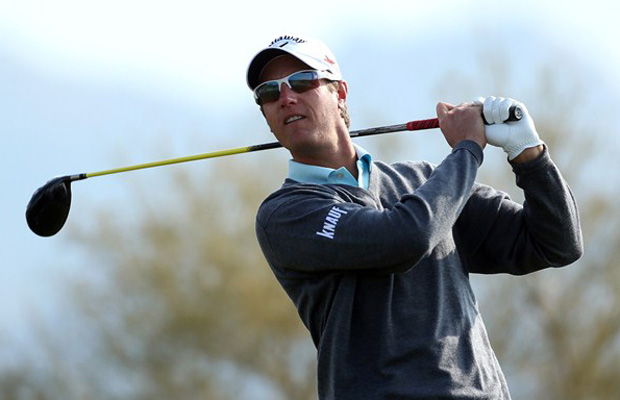
With the 2014 PGA Tour season starting, I wanted to give the readers a look at a few players on Tour that I feel will be on the rise and falling for the season. The data below is the player’s 2013 metrics.
Players on the Rise
NICOLAS COLSAERTS
Colsaerts was the hot prospect headed for the Tour in 2013 coming off splendid play at the 2012 Ryder Cup. He generates a ton of club head speed and is one of the longer hitters on Tour. He was also eighth in approach shots from the rough and fourth in approach shots from the fairway. Thus, he’s an excellent iron player if he keeps the ball in play. He actually drove the ball quite well for most of the season, but he regressed toward the end of the year.
The reason why I like Colsaerts is that he hits it so long and hits it so well with his irons that the only part of the game that held him back was on and around the greens. And where he excelled with his irons was in the ever-important Danger Zone. He also was first in shots from 225-to-250 yards.
Colsaerts was saddled with the strongest strength of schedule on Tour last year, while only ranking 100th in Purse Size per Event. I believe that he can get used to the greens along with working on his putting in the offseason that he will have much more success in 2014. As I have mentioned in Pro Golf Synopsis, the biggest statistical advantage that distance provides is it allows the golfer to putt overcome poor putting. This is due to the par-5’s on Tour playing more like par-4’s for long hitters such as Colsaerts. Therefore, he can still be a mediocre putter on Tour and have a big year. He just needs to stop putting like one of the worst putters on Tour.
CHARLES HOWELL III
Howell has been one of the most overrated ballstrikers in recent years and subsequently one of the most underrated in terms of short game and putting. What has happened is that he has steepened his angle of attack with the driver over time. I have written about this in Pro Golf Synopsis, where the most common trait of a golfer who “loses their driving” on Tour is the one who starts to struggle with his accuracy off the tee and to counter that he tries to fly the ball lower by hitting more and more downward on the ball. This may provide some initial relief for the golfer, but eventually he not only starts losing distance off the tee, but he becomes more inaccurate and imprecise off the tee as well.
Here is a look at Howell’s radar metrics during the past three years:
Frustrated, Howell started to work with Grant Waite for much of the second half of 2013 in order to improve shallow out his attack angle. Here is a look of his radar metrics in the fall 2013-2014 season:
This created a noticeable improvement in his ballstriking in the 2013-2014 fall season. Here is a look at his rankings in the key ballstriking metrics in those tournaments he played in:
Granted, his rankings in these events is out of roughly 120 players versus his cumulative rankings in 2013 being out of 190 players. But, he is currently in the top-10th percentile in driving and entirely better from each of the zones. With his club head speed, putting and short game he can take this much improved ballstriking and set target for having a spectacular 2014.
MATT JONES
Jones’ metrics may not impress many golfers. Last year I wrote about how PGA Tour players only need to be average or better in four areas of the game.
- Driving Effectiveness
- Danger Zone (175 to 225 yards) Play
- Putts Gained
- Short Game Shots from 10 to 20 yards
There is a very strong correlation between Tour players that finish in the top-half in these categories and their success on Tour. Not only do golfers that achieve “The Power of Being Average” usually keep their cards, but they tend to have wildly successful seasons. Jones finished a very respectable 49th on the money list. But even more impressive was his ranking of 29th in Adjusted Scoring Average. His Purse Size per Event is likely to improve and if he has the talent to achieve each of the “Big Four” areas of the game, he has a good chance to carrying it over to 2014 and having a terrific season.
JOHN SENDEN
While Senden’s metrics were not impressive, 2013 was a down year for him. Senden is well known for his ballstriking and is usually one of the premier ballstrikers on Tour from off the tee and on shots longer than 175 yards.
Since Senden did not lose any club head speed, I believe that he will regain his ballstriking in 2014. Furthermore, he was hampered by his inability to make putts from longer than 15 feet. He ranked 153rd in make percentage from long distance and historically that metric means he should progress toward the mean.
JOSH TEATER
Teater just missed finishing in the top half of “The Big Four” (Driving Effectiveness, Danger Zone, Short Game Shots and Putts Gained) as he ranked 96th in Putts Gained.
If there are worries about his game, he tends to miss a high percentage of the time to the right (60.5 percent) and that his ranking in Adjusted Scoring Average (82nd) should have been much better given his key performance metrics. This indicates that Teater may have some issues with his strategy.
In the end, it is difficult to take away from a player that almost executed “The Big Four” and did it against top-tier competition. Furthermore, parts of his issues with the putter were from long distance as he ranked 138th in make percentage from beyond 15 feet. This should progress toward the mean in 2014.
PLAYERS ON THE DECLINE
JOHN MERRICK
Typically, Merrick has been a very good driver of the ball and has had some issues with his iron play. In the past two seasons, he has made strides to improve his iron play, but his driving has regressed. Last year he started off the season as one of the premier Danger Zone players on Tour, while driving the ball very effectively and putting well to win his first-ever PGA Tour event, the Northern Trust Open at Riviera Country Club.
Since then, Merrick has only made an average of $35,566 per event played, which would have ranked 105th on Tour. Merrick benefited from playing a fairly soft schedule that had a fairly high purse size per event. Those two rankings should be more similar in 2014, which means that his strength of schedule should become tougher while his average Purse Size per Event should drop slightly and that would make it more difficult for him to have success.
DEREK ERNST
Ernst benefited from his surprise victory at the Wells Fargo Championship at Quail Hollow after making it through the Monday qualifier. He was a good driver of the ball in 2013, but did not do much well beside that. He performed poorly in each of the zones and was the second worst on Tour on short game shots from 10-to-20 yards. He was also a mediocre putter.
That does not make for good prospects in 2014, and he finished out the 2013 missing nine of his past 13 cuts with a best finish of T-44th. One of the big things Ernst has going for him is his world-class club head speed. If he can use that speed to his advantage and start bombing shots off the tee, all he needs is one good week of golf and he can get into contention for another victory. But since he does not hit it as far as his club head speed indicates, I have my doubts that will happen.
HUNTER MAHAN
Mahan’s game has always been his impeccable driving of the ball. He generates about average club head speed and is above average in distance off the tee. But, he has an uncanny ability to hit a ton of fairways (66.6 percent) given his distance off the tee. The problem for Mahan has been his Danger Zone play and his Short Game from 10-to-20 yards. Mahan is an underrated putter, but was also saved by ranking 39th in Putts Made Percentage from 15 to 25 feet. That should regress toward the mean in 2014 and that means that his performance should dip as well if he everything remains the same. I still see him as ranking in the top 100 on the Money List, if not the top 50. But, I feel he will have a down year when I look at the data.
CHRIS STROUD
Stroud had that incredible chip-in on the 72nd hole of the Travelers to force a playoff, and had a fine year overall as he finished 55th on the PGA Tour money list.
We can see some of the reasons why I do not favor his prospects in 2014. He drove it poorly (164th) and he is a short hitter off the tee. He also performed poorly from the Danger Zone. Where he made it up was from the Safe Zone and with his putting and short-game play. So he did a good job of getting the ball up near the green in regulation and could often putt and chip his way to par and birdie.
Most of his driving issues were consistency related. He hit a decent amount of fairways (62.4 percent), but ranked 137th in Fairway Bunker Percentage and 147th in Missed Fairway — Other Percentage (shots that find the water, trees, O.B, result in rescue shots, etc). Short and crooked is a hard way to make it on Tour.
Stroud also ranked 50th in make percentage on putts from longer than 15 feet. That should regress toward the mean and will cost him strokes in 2014.
JONAS BLIXT
If you look at Blixt’s 2013 season, we see a golfer that only played well in four tournaments. He had a T-26th finish at the British Open, a T-11th finish at Colonial, a fourth-place finish at Oak Hill and a victory at The Greenbrier. Outside of those tournaments, he usually missed the cut or finished poorly.
Blixt did this through good, but streaky putting and a good short game. The chart below shows Blixt’s streaky putting throughout the year:
Anything below -0.5 is quite poor and above +0.5 is quite good. Blixt ran through some extreme highs and lows throughout the season, which created a trend line that was very streaky. He was on fire with the putter after Sawgrass and it is very unlikely he will be able to keep up that pace in 2014.
Opinion & Analysis
The 2 primary challenges golf equipment companies face

As the editor-in-chief of this website and an observer of the GolfWRX forums and other online golf equipment discourse for over a decade, I’m pretty well attuned to the grunts and grumbles of a significant portion of the golf equipment purchasing spectrum. And before you accuse me of lording above all in some digital ivory tower, I’d like to offer that I worked at golf courses (public and private) for years prior to picking up my pen, so I’m well-versed in the non-degenerate golf equipment consumers out there. I touched (green)grass (retail)!
Complaints about the ills of and related to the OEMs usually follow some version of: Product cycles are too short for real innovation, tour equipment isn’t the same as retail (which is largely not true, by the way), too much is invested in marketing and not enough in R&D, top staffer X hasn’t even put the new driver in play, so it’s obviously not superior to the previous generation, prices are too high, and on and on.
Without digging into the merits of any of these claims, which I believe are mostly red herrings, I’d like to bring into view of our rangefinder what I believe to be the two primary difficulties golf equipment companies face.
One: As Terry Koehler, back when he was the CEO of Ben Hogan, told me at the time of the Ft Worth irons launch, if you can’t regularly hit the golf ball in a coin-sized area in the middle of the face, there’s not a ton that iron technology can do for you. Now, this is less true now with respect to irons than when he said it, and is less and less true by degrees as the clubs get larger (utilities, fairways, hybrids, drivers), but there remains a great deal of golf equipment truth in that statement. Think about it — which is to say, in TL;DR fashion, get lessons from a qualified instructor who will teach you about the fundamentals of repeatable impact and how the golf swing works, not just offer band-aid fixes. If you can’t repeatably deliver the golf club to the golf ball in something resembling the manner it was designed for, how can you expect to be getting the most out of the club — put another way, the maximum value from your investment?
Similarly, game improvement equipment can only improve your game if you game it. In other words, get fit for the clubs you ought to be playing rather than filling the bag with the ones you wish you could hit or used to be able to hit. Of course, don’t do this if you don’t care about performance and just want to hit a forged blade while playing off an 18 handicap. That’s absolutely fine. There were plenty of members in clubs back in the day playing Hogan Apex or Mizuno MP-32 irons who had no business doing so from a ballstriking standpoint, but they enjoyed their look, feel, and complementary qualities to their Gatsby hats and cashmere sweaters. Do what brings you a measure of joy in this maddening game.
Now, the second issue. This is not a plea for non-conforming equipment; rather, it is a statement of fact. USGA/R&A limits on every facet of golf equipment are detrimental to golf equipment manufacturers. Sure, you know this, but do you think about it as it applies to almost every element of equipment? A 500cc driver would be inherently more forgiving than a 460cc, as one with a COR measurement in excess of 0.83. 50-inch shafts. Box grooves. And on and on.
Would fewer regulations be objectively bad for the game? Would this erode its soul? Fortunately, that’s beside the point of this exercise, which is merely to point out the facts. The fact, in this case, is that equipment restrictions and regulations are the slaughterbench of an abundance of innovation in the golf equipment space. Is this for the best? Well, now I’ve asked the question twice and might as well give a partial response, I guess my answer to that would be, “It depends on what type of golf you’re playing and who you’re playing it with.”
For my part, I don’t mind embarrassing myself with vintage blades and persimmons chasing after the quasi-spiritual elevation of a well-struck shot, but that’s just me. Plenty of folks don’t give a damn if their grooves are conforming. Plenty of folks think the folks in Liberty Corner ought to add a prison to the museum for such offences. And those are just a few of the considerations for the amateur game — which doesn’t get inside the gallery ropes of the pro game…
Different strokes in the game of golf, in my humble opinion.
Anyway, I believe equipment company engineers are genuinely trying to build better equipment year over year. The marketing departments are trying to find ways to make this equipment appeal to the broadest segment of the golf market possible. All of this against (1) the backdrop of — at least for now — firm product cycles. And golfers who, with their ~15 average handicap (men), for the most part, are not striping the golf ball like Tiger in his prime and seem to have less and less time year over year to practice and improve. (2) Regulations that massively restrict what they’re able to do…
That’s the landscape as I see it and the real headwinds for golf equipment companies. No doubt, there’s more I haven’t considered, but I think the previous is a better — and better faith — point of departure when formulating any serious commentary on the golf equipment world than some of the more cynical and conspiratorial takes I hear.
Agree? Disagree? Think I’m worthy of an Adam Hadwin-esque security guard tackle? Let me know in the comments.
@golfoncbs The infamous Adam Hadwin tackle ? #golf #fyp #canada #pgatour #adamhadwin ? Ghibli-style nostalgic waltz – MaSssuguMusic
Podcasts
Fore Love of Golf: Introducing a new club concept

Episode #16 brings us Cliff McKinney. Cliff is the founder of Old Charlie Golf Club, a new club, and concept, to be built in the Florida panhandle. The model is quite interesting and aims to make great, private golf more affordable. We hope you enjoy the show!
Opinion & Analysis
On Scottie Scheffler wondering ‘What’s the point of winning?’

Last week, I came across a reel from BBC Sport on Instagram featuring Scottie Scheffler speaking to the media ahead of The Open at Royal Portrush. In it, he shared that he often wonders what the point is of wanting to win tournaments so badly — especially when he knows, deep down, that it doesn’t lead to a truly fulfilling life.
View this post on Instagram
“Is it great to be able to win tournaments and to accomplish the things I have in the game of golf? Yeah, it brings tears to my eyes just to think about it because I’ve literally worked my entire life to be good at this sport,” Scheffler said. “To have that kind of sense of accomplishment, I think, is a pretty cool feeling. To get to live out your dreams is very special, but at the end of the day, I’m not out here to inspire the next generation of golfers. I’m not out here to inspire someone to be the best player in the world, because what’s the point?”
Ironically — or perhaps perfectly — he went on to win the claret jug.
That question — what’s the point of winning? — cuts straight to the heart of the human journey.
As someone who’s spent over two decades in the trenches of professional golf, and in deep study of the mental, emotional, and spiritual dimensions of the game, I see Scottie’s inner conflict as a sign of soul evolution in motion.
I came to golf late. I wasn’t a junior standout or college All-American. At 27, I left a steady corporate job to see if I could be on the PGA Tour starting as a 14-handicap, average-length hitter. Over the years, my journey has been defined less by trophies and more by the relentless effort to navigate the deeply inequitable and gated system of professional golf — an effort that ultimately turned inward and helped me evolve as both a golfer and a person.
One perspective that helped me make sense of this inner dissonance around competition and our culture’s tendency to overvalue winning is the idea of soul evolution.
The University of Virginia’s Division of Perceptual Studies has done extensive research on reincarnation, and Netflix’s Surviving Death (Episode 6) explores the topic, too. Whether you take it literally or metaphorically, the idea that we’re on a long arc of growth — from beginner to sage elder — offers a profound perspective.
If you accept the premise literally, then terms like “young soul” and “old soul” start to hold meaning. However, even if we set the word “soul” aside, it’s easy to see that different levels of life experience produce different worldviews.
Newer souls — or people in earlier stages of their development — may be curious and kind but still lack discernment or depth. There is a naivety, and they don’t yet question as deeply, tending to see things in black and white, partly because certainty feels safer than confronting the unknown.
As we gain more experience, we begin to experiment. We test limits. We chase extreme external goals — sometimes at the expense of health, relationships, or inner peace — still operating from hunger, ambition, and the fragility of the ego.
It’s a necessary stage, but often a turbulent and unfulfilling one.
David Duval fell off the map after reaching World No. 1. Bubba Watson had his own “Is this it?” moment with his caddie, Ted Scott, after winning the Masters.
In Aaron Rodgers: Enigma, reflecting on his 2011 Super Bowl win, Rodgers said:
“Now I’ve accomplished the only thing that I really, really wanted to do in my life. Now what? I was like, ‘Did I aim at the wrong thing? Did I spend too much time thinking about stuff that ultimately doesn’t give you true happiness?’”
Jim Carrey once said, “I think everybody should get rich and famous and do everything they ever dreamed of so they can see that it’s not the answer.”
Eventually, though, something shifts.
We begin to see in shades of gray. Winning, dominating, accumulating—these pursuits lose their shine. The rewards feel more fleeting. Living in a constant state of fight-or-flight makes us feel alive, yes, but not happy and joyful.
Compassion begins to replace ambition. Love, presence, and gratitude become more fulfilling than status, profits, or trophies. We crave balance over burnout. Collaboration over competition. Meaning over metrics.
Interestingly, if we zoom out, we can apply this same model to nations and cultures. Countries, like people, have a collective “soul stage” made up of the individuals within them.
Take the United States, for example. I’d place it as a mid-level soul: highly competitive and deeply driven, but still learning emotional maturity. Still uncomfortable with nuance. Still believing that more is always better. Despite its global wins, the U.S. currently ranks just 23rd in happiness (as of 2025). You might liken it to a gifted teenager—bold, eager, and ambitious, but angsty and still figuring out how to live well and in balance. As much as a parent wants to protect their child, sometimes the child has to make their own mistakes to truly grow.
So when Scottie Scheffler wonders what the point of winning is, I don’t see someone losing strength.
I see someone evolving.
He’s beginning to look beyond the leaderboard. Beyond metrics of success that carry a lower vibration. And yet, in a poetic twist, Scheffler did go on to win The Open. But that only reinforces the point: even at the pinnacle, the question remains. And if more of us in the golf and sports world — and in U.S. culture at large — started asking similar questions, we might discover that the more meaningful trophy isn’t about accumulating or beating others at all costs.
It’s about awakening and evolving to something more than winning could ever promise.


























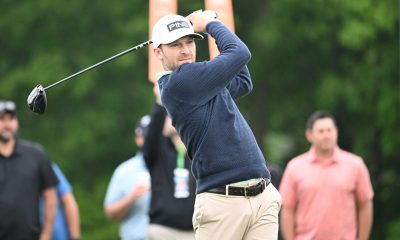

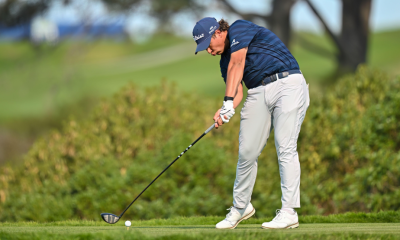

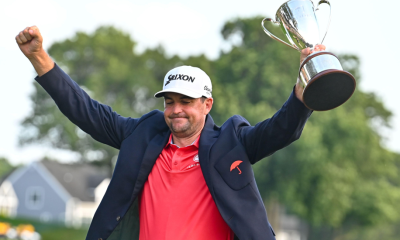



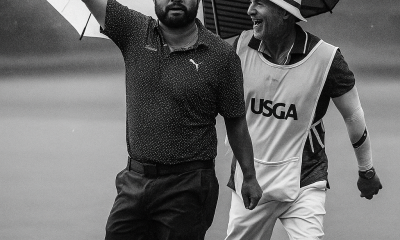

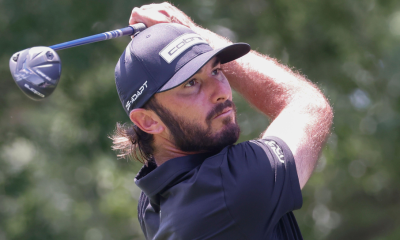









Pingback: 10 Players Who Will Rise (or Fall) in 2015 | Golf Gear Select
Pingback: 10 Players Who Will Rise (or Fall) in 2015 | GolfClick.net | Blog
AIPM
Mar 31, 2014 at 6:15 pm
Good call on John Senden… Stats only go so far, but so far these have been pretty well judged.
topnotch17
Jan 10, 2014 at 6:21 pm
Nerd alert!
AHG Anderson
Jan 10, 2014 at 8:42 am
I like the use of stats in this way and since Tour pros and caddies and others subscribe to them then that tells us all we need to know; they work and they help the pro focus on where he needs to improve or consolidate. Of course there’s speculation in all sports or all walks of life but having access to such data can only be a good thing; it doesn’t promise how the future season might pan out but then unless you have a crystal ball then nothing else can either. Those guys who don’t rate what they are being told here are those I’d imagine who flunked out at school in math; they can’t interpret the data so they diss it as being useless – open your minds to the 21st century you cavemen!
Brian
Jan 8, 2014 at 4:22 pm
Any thoughts on Graham Delaet for 2014? He seemed to do well in 2013, especially after he went to the short putter.
Richie Hunt
Jan 9, 2014 at 10:22 am
He should do well because he typically performs well in the key metrics to being consistently successful…driving and Danger Zone play. He’s one of the very best ballstrikers on Tour.
gunmetal
Jan 7, 2014 at 7:39 pm
I think these data would be pretty valuable to the players. I would want know where I need get better. I agree with everyone on the list except for Colsearts and Mahan. I watched Nicolas at done event in China a few weeks ago and wasn’t at all impressed. One week at the Ryder cup (thanks for that timing, btw) isn’t enough to convince me. I do live to watch him swing, though. Mahan knows how to win. I think this was his first year not winning in a long time. He’ll be fine.
Mike
Jan 6, 2014 at 5:09 pm
Well numbers don’t lie. It’s like making your pick in horse racing. Look at the numbers and you are right with some luck.
JnRadioActive
Jan 6, 2014 at 4:27 pm
If i had a dollar for everytime I heard it was going to be the year of Chucky 3 Sticks… well I’d have 6 or 7 dollars anyway…
Jeff
Oct 10, 2014 at 2:11 pm
Great comment. Chuckie 3 sticks saves his best for practice rounds at Isleworth.
Homer Simpson
Jan 6, 2014 at 4:12 pm
Here we go again…useless speculation exactly.
Evan
Jan 6, 2014 at 3:32 pm
Useless speculation. The players create the data, not the data creates the player. Player’s 2014 season success will depend upon:
1. Talent
2. Hard Work
3. A little luck
That’s it, that’s all… good luck digging into the stats after the tournament has left town.
JM
Jan 6, 2014 at 8:11 pm
I think all the writer is saying is that the data is a reflection of the players game as far as strengths/weaknesses
The stats show how a particular player “should” fare over the course of a year long season given past performance metrics and trends.
Of course, some players will just get hot some weeks and it may be enough to win or skew overall stats.
And of couse some players will improve parts of their game and others will regress in certain areas. It is the players who can improve in certain key areas that may be weak, without having their areas of strength regress that will have successful seasons typically
Evan
Jan 7, 2014 at 6:34 pm
Yes, I know what the writer is saying… what I am saying is that even with stats in hand, it is still pure speculation. Does he probably have a slightly better chance at predicting success on tour considering he follows these guys and studies the numbers? Sure, but it’s still pure speculation. RH might be a wealthy man if he had a formula to pick success in golf… he’d live in Vegas, not Orlando.